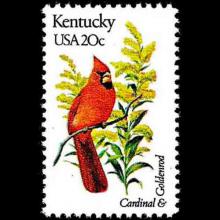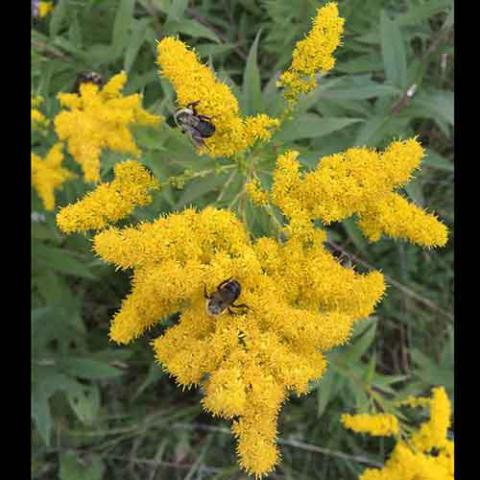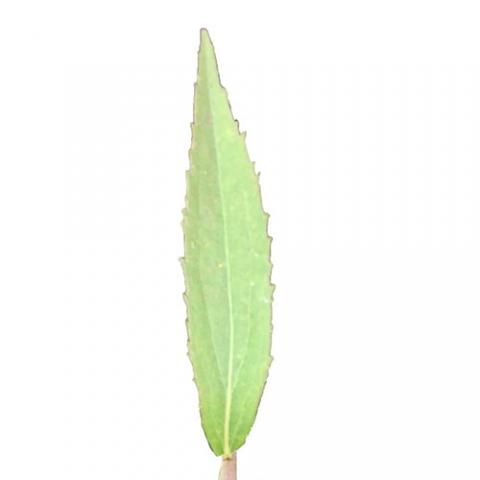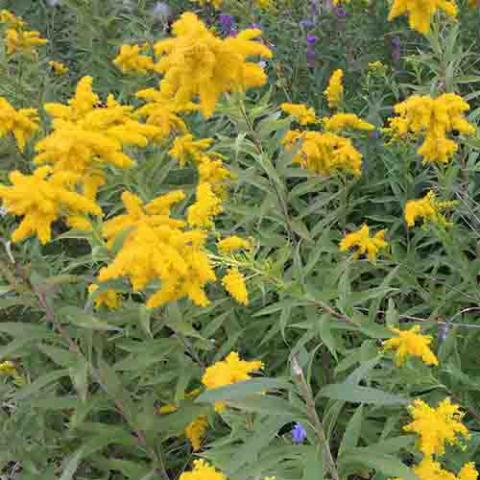NAME(S)
TAXONOMY
PLANTAE ID
THERAPEUTIC
United States
Issued:
Stamp:
Solidago canadensis
United States
Issued:
Stamp:
Solidago canadensis
United States
Issued:
Stamp:
Solidago canadensis
Discovery: Rising CO2 depletes pollen’s nutritional potency, bees suffer
by Michelle Z. Donahue, June 1, 2016
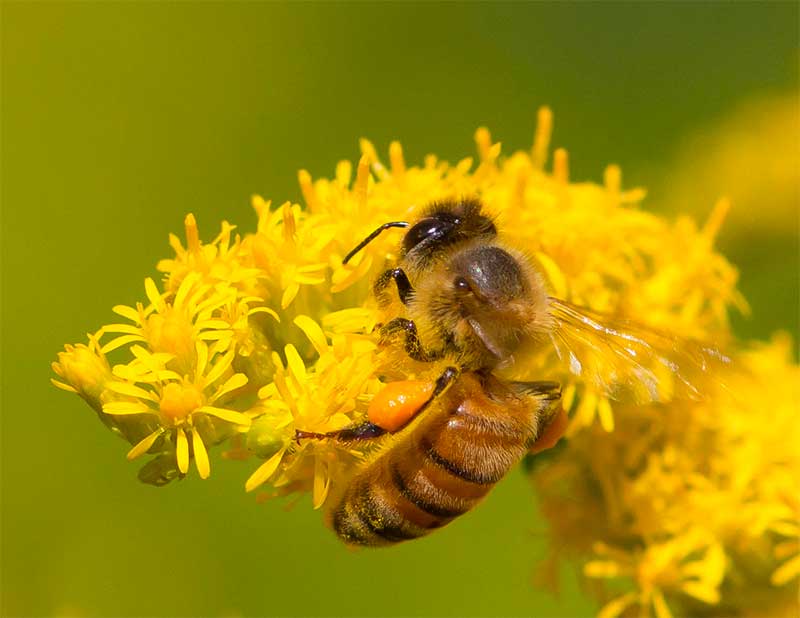
Unless you’ve been living under a rock for the last few years, you’ve doubtless caught at least a passing reference to the plight of the beleaguered bee. Bees of all types pollinate an estimated 75 percent of our fruit, nut and vegetable crops, and they’ve been suffering population declines in recent years from a variety of suspected sources. These die-offs are a major concern to farmers and hobby beekeepers, as well as anyone who likes to eat.
Bees like food, too, but a new study led by the U.S. Department of Agriculture’s Agricultural Research Service has found that recent increases in carbon dioxide emissions over the last several decades have made a key autumnal food source less nutritious than in the past. This adds one more potential factor to the cocktail of stressors making bees vulnerable to attack by pests, pathogens and pesticides.
USDA Agricultural Research Service plant physiologist Lewis Ziska, together with colleagues from Purdue University, Williams College and the Smithsonian compared the protein content of pollen from historic specimens of Canada goldenrod (Solidago canadensis) from the U.S. National Herbarium collection at the Smithsonian’s National Museum of Natural History with pollen from field trials simulating varying levels of atmospheric carbon dioxide. They found that as CO2 levels increased, the protein content of the pollen decreased.
Goldenrod, which blooms from July through October across most of North America, is one of the most widely available sources of pollen for late-year foraging. Though nectar is bees’ main food source during the warmer months, bees need the fats, vitamins and minerals from pollen protein to make it through the winter. Because they only store small amounts of it, fluctuations in the amount or quality of the pollen itself can directly affect bee health.
“Goldenrod was the focus because it’s the last source of pollen for bees before they overwinter,” Ziska says. “Whatever happens to goldenrod in the fall can be a harbinger of overall bee health and their ability to survive until spring.”
How rising CO2 affects insects’ food sources has never been investigated in much depth, despite more than 100 such studies on human food sources suggesting the same kind of impact, Ziska said. Using Smithsonian herbarium samples dating from 1842 through to 1998, as well as more recently collected samples from other sources, Ziska found that pollen protein content has declined by about one third since 1960, from 18 to 12 percent.
A field experiment that simulated a similar range of CO2 exposures, but included future CO2 concentrations up to 500 parts per million (ppm) confirmed the herbarium results. Still, as Ziska pointed out, it’s not clear if there’s an upper limit to the effect, or if the protein content will eventually stabilize regardless of the CO2 concentration in the atmosphere.
The silver lining to the study, he said, is that commercial and hobby honeybee keepers may be able to counteract any nutritional deficiencies by supplying additional protein late in the fall. How to ameliorate the impact on wild, solitary bees is, however, unclear.
“We wanted to conduct a robust study by looking at both the historical record and field experiments,” Ziska says. Though he started out by visiting herbariums around the world, including in Australia, the Smithsonian’s herbarium “has by far the best and most diverse set of herbarium samples for studying long term climate effects,” he adds.
Andrew Clark, who now works for the USDA but at the time of the study was an Smithsonian herbarium collections specialist guiding Ziska through the Solidago specimens, says that the use of goldenrod in this way is a fairly novel approach to the kinds of research typically conducted with herbariums. Pollen studies, for example, aren’t done very often any more, and typically focus on the structure of the pollen itself to aid in plant family classification.
“The Smithsonian herbarium goes right to the heart of America’s past, because when it started our first collections were from people like Lewis and Clark, frontiersmen who were identifying what was unique to America. No European had seen what was there,” Clark said. “It’s a very clear snapshot of what our natural environment looked like at that time.”
Whether or not the bees will be able to adjust to a degraded pollen source is still in unclear.
“As with most biological organisms, there is some capacity for adaptation, but how much is an open question,” Ziska paused, then continued. “I often read where ‘CO2 is plant food’, but that simple meme falls short of understanding the complexity of CO2 in plant biology. I suspect that plant pollinators are just the tip of the iceberg—or flower.”
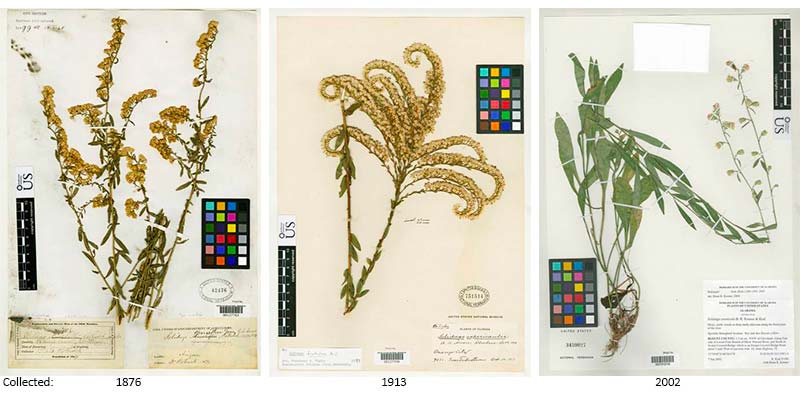
Genus species (Plantae): Solidago canadensis
Solidago canadensis, known as Canada goldenrod or Canadian goldenrod, is an herbaceous perennial plant of the family Asteraceae. It is native to northeastern and north-central North America. It is an invasive plant in other parts of the continent and several areas worldwide, including Europe and Asia. It is often grown as an ornamental in flower gardens.
The plant is erect, often forming colonies. Flowers are small yellow heads held above the foliage on a branching inflorescence.
Ecology and distribution
Solidago canadensis is sometimes browsed by deer and is good to fair as food for domestic livestock such as cattle or horses.
It is found in a variety of habitats. It typically is one of the first plants to colonize an area after disturbance (such as fire) and rarely persists once shrubs and trees become established. It is found in very dry locations and also waterlogged ones.
Although utilized by a variety of insects to some degree for its floral rewards, it is especially strongly favored as a nectar source by paper wasps, such as Polistes parametricus and Polistes fuscatus. Aside from wasps, it is also fairly popular with honeybees and bumblebees. It is generally passed over by monarchs and other larger-sized butterflies, in favor of other flowers.
It can be extremely aggressive and tends to form monocultures and near-monocultures in parts of its native range, such as in Southwest Ohio clay loam. It often outcompetes competitive species in such habitat. It not only seeds a great deal but also spreads rapidly via running rhizomes. Its root system is very tough and plants that have been pulled out of the ground prior to freezing and left exposed atop soil have survived -14 Fahrenheit (-26C) winter temperatures.
Medicinal uses
The stems and leaves of goldenrod have been dried and used in folk medicine. Its main use has been on the skin to treat wounds and as a diuretic. It has been used to get rid of kidney stones and other kidney ailments by flushing them out. Other uses have included as a mouth rinse and gargle, and treatment for inflammation, tuberculosis, allergies, gout, hemorrhoids, arthritis, asthma, internal bleeding. Animal testing has shown it to be effective in reducing hypertension, muscle spasms, and inflammation, as well as fighting infections. It contains alkaloids that can mask bitterness, possibly making it an alternative to artificial substances or licorice allergies in medicinal combinations.
Allergic skin reactions can occur when coming into contact with the living plant. However, it is generally recognized that the plant does not cause allergic rhinitis. It is often confused with ragweed, which does cause pollen allergies.
Reference: Wikipedia

